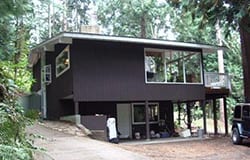Call to Action: Comment on Mandatory Housing Affordability
Share Your Thoughts on Affordability!
Comment Period Extended to August 7
Have you heard of HALA? MHA? What about DEIS? If these acronyms are not familiar to you, they should be! All will affect your life and your city’s future.
What can you do? We’re asking supporters of preservation to review the Draft Environmental Impact Statement (DEIS) for Mandatory Housing Affordability (MHA) policy and submit your comments to the Office of Planning and Community Development (OPCD) by Monday, August 7. The DEIS evaluates MHA implementation in urban villages, proposed urban village expansion areas, and all other multifamily and commercial areas throughout the city.
A key component of the Housing Affordability and Livability Agenda (HALA) strategy, MHA will require new development to either build affordable homes or contribute to a City fund for affordable housing. OPCD estimates MHA will deliver more than 6,000 rent-restricted housing units over the next 10 years. As proposed, MHA will expand housing choices by granting additional development capacity to allow for construction of more market-rate housing and commercial space.
The 460-page DEIS evaluates three alternatives (one of which is “No Action”) for implementing zoning changes proposed under MHA, and includes a section addressing historic resources (Section 3.5). The DEIS does not include Downtown, South Lake Union, or the University District, where MHA is already proposed or in effect.
Historic Seattle shares the City’s concern about the lack of affordable housing and supports a number of HALA’s recommendations. However, in our opinion, what’s being proposed for MHA is a “one-size fits-all” approach that will have a potentially significant adverse impact on the livability and quality of Seattle’s neighborhoods.
Here Are Some Ways Historic Preservation + Affordability + Livability Intersect:
Housing Diversity and “Naturally Occurring” Affordability
Older buildings provide a diversity of housing types and tend to provide more units of affordable rental housing than taller, newer developments. Research shows that neighborhoods with a high concentration of historic buildings and mixed-scale development are more vibrant and perform better in terms of environmental, economic, and social metrics.
Hidden Density
Older neighborhoods contain hidden density. It has been demonstrated that “human-scale neighborhoods with older fabric are the ‘missing middle’ of cities and can achieve surprisingly high population densities.”
Social Equity
Neighborhoods with a smaller-scaled mix of old and new buildings draw a higher proportion of non-chain shops, restaurants, and women and minority-owned businesses than new neighborhoods.
TAKE ACTION! Historic Seattle will submit public comments on the proposed alternatives and potential impacts on historic properties. We urge you to get engaged so that your voice is heard!
Feel like wonking out a bit more? Here are some more talking points related to the MHA DEIS:
MHA should provide a more balanced approach to achieving growth
Historic Seattle believes City leadership needs to strike a balance to achieve density without demolition, and affordability without sacrificing livability in order to ensure that how we grow is sustainable and resilient – while retaining urban character and sense of place.
The Historic Resources section (3.5) is inadequate and lacks meaningful analysis. It is repetitive, imprecise, and non-specific
The section on Affected Environment (3.5.1) does not provide any real understanding of the study area’s history, context, and patterns of developments. It should include details on neighborhoods to adequately assess potential impacts to historic resources such as potentially-eligible individual properties and future historic districts. Added development pressure will result in increased demolition of potentially historic buildings and neighborhoods and adversely impact the character and scale of neighborhood blocks.
The analysis should reflect a better understanding of what exists that’s currently affordable, in order to determine the net gain or loss from the proposed MHA changes. What will the impact be in terms of tear-downs, net gain of housing, and how much is “affordable”?
The DEIS does not connect MHA to URM
Unreinforced Masonry (URM) buildings are mentioned in both Affected Environment (3.5.1) and Mitigation Measures (3.5.3), however, the DEIS does not reference the Seattle Department of Construction and Inspection’s (SDCI) list of over 1,100 URM properties in the city. The analysis should include the number of URMs in each of the study area neighborhoods in order to understand how MHA might impact these properties.
Additionally, complying with a possible City mandate to seismically retrofit URMs to the “bolts plus” standard will present a substantial financial burden on many property owners. If preservation of existing affordable housing is truly a goal of HALA, it would then make sense to offer financial incentives to property owners who preserve and upgrade historic URMs and provide affordable housing.
The DEIS should provide substantive mitigation measures
Section 3.5.3 focus on two mitigation measures that are already in place–Comprehensive Plan policies and City Landmarks process, and proposes a third to continue funding of comprehensive survey/inventory efforts that have been inactive for years. A list of other potential mitigation measures follows in a separate paragraph but it is unclear whether any of these have any import or will be considered seriously. Mitigation should actually respond to the potential impacts and not rely only on existing policies, programs, and regulations without ways to implement through added funding and staff resources.
Please use your own words and include examples in your neighborhood that relate to the talking points above. Submit written comments by August 7 to MHA.EIS@seattle.gov.
Or mail to:
City of Seattle Office of Planning and Community Development
Attn: MHA DEIS
PO Box 34019
Seattle, WA 98124-4019
Thank you in advance for taking the time to advocate for Seattle’s future development and places that matter! If you’d like more information about this advocacy effort, please contact Eugenia Woo, Director of Preservation Services, Historic Seattle, at eugeniaw@historicseattle.org or 206.622.6952, ext 245.
ADDITIONAL RESOURCES:
What is an EIS?
EIS Process
Preservation Green Lab (PGL) Older, Smaller, Better report
PGL Atlas of ReUrbanism
CityLab “Density Without Demolition”
Photo: Pike/Pine new construction adjacent to historic apartment building; source: Historic Seattle


